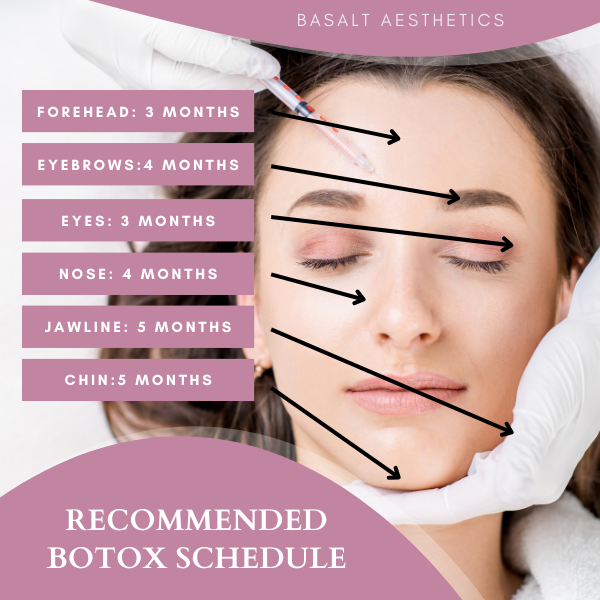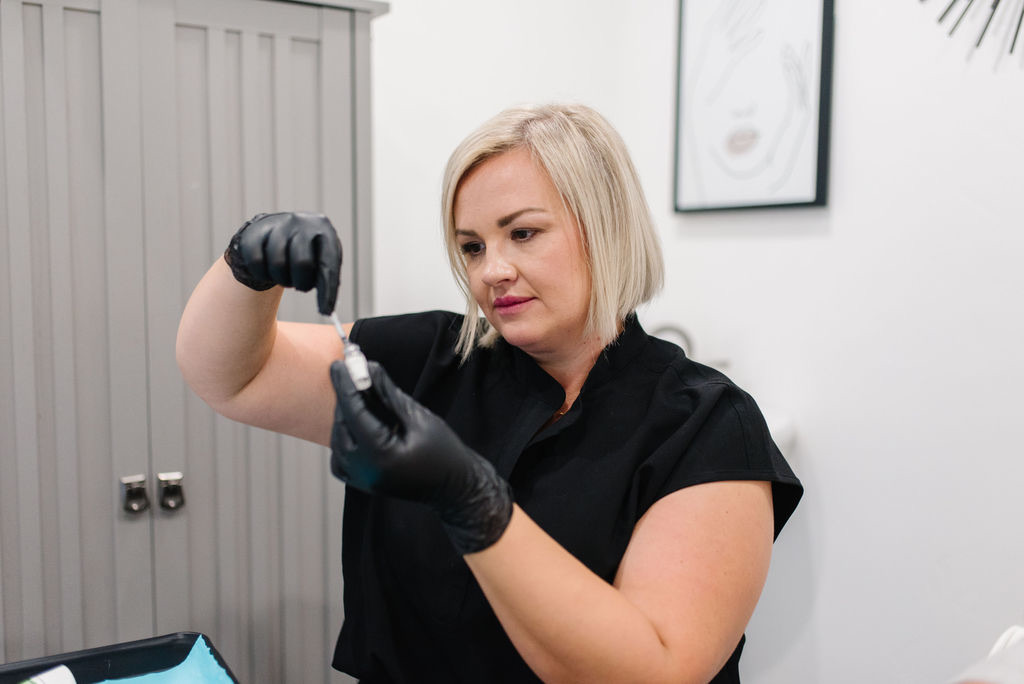Are you considering Botox or Dysport treatments to rejuvenate your appearance and smooth out those fine lines and wrinkles? One of the most common questions that arise is, “How often should you get Botox?” Determining the optimal frequency for these cosmetic procedures is crucial to achieving the desired results while ensuring your safety. In this guide to a Botox schedule, we’ll explore the factors that influence your Botox schedule and provide insights on maintaining a perfect beauty regimen. So, let’s dive in!
If you have any questions about Botox or Dysport treatments you can book a free online virtual consultation today.
Quick Links
- How Often Should You Get Botox?
- Factors Influencing Your Botox Schedule
- Maintaining a Consistent Beauty Regimen
How Often Should You Get Botox?
Determining how often you should get Botox or Dysport treatments depends on various factors, including individual needs, muscle movement, and the longevity of the results. Typically, it is recommended to receive Botox injections every 3 to 4 months. This timeframe allows for optimal muscle relaxation and ensures that the results remain consistent.
However, it’s important to consult with a qualified cosmetic professional who can assess your unique situation and recommend a personalized treatment plan. Factors such as skin condition, muscle strength, and desired outcomes can vary from person to person, influencing the ideal frequency of treatments.
GET IN TOUCH
Schedule a Free Virtual Consultation
Factors Influencing Your Botox Schedule
While the general guideline suggests treatments every 3 to 4 months, certain factors may require adjustments to your Botox schedule. One crucial factor is your age. Younger individuals may have stronger muscle movements and faster metabolism, necessitating more frequent treatments compared to older individuals.
Another factor to consider is the area being treated. Certain facial regions, such as the forehead or crow’s feet, may require more frequent injections due to increased muscle activity and movement. On the other hand, areas with less muscle activity, like the chin or jawline, may have longer-lasting results, allowing for more extended intervals between treatments.
Recommended Botox Maintenance Schedule for Botox Areas

- Forehead: Every 3 months
- Glabella (between the eyebrows): Every 3-4 months
- Crow’s Feet (around the eyes): Every 3-4 months
- Bunny Lines (sides of the nose): Every 4 months
- Chin (to soften dimpling or create a smoother appearance): Every 4-6 months
- Eyebrows (to create a brow lift): Every 3 months
- Jawline (to reduce jaw clenching or slim the appearance): Every 5 months
It’s important to note that these recommendations are general guidelines and can vary based on individual factors. Consulting with a qualified cosmetic professional is crucial to assess your specific needs and create a personalized Botox schedule that aligns with your desired aesthetic outcomes.
Additionally, your desired aesthetic outcome plays a role in determining the frequency of treatments. Some individuals prefer a completely wrinkle-free appearance, while others opt for a more natural look with some muscle movement remaining. Your cosmetic professional will consider your preferences and goals when creating a personalized Botox schedule.
Post-Treatment Care
- Avoid Intense Exercise: Recommend avoiding intense physical activity for at least 24 hours post-treatment to prevent the spread of Botox.
- Facial Movements: Suggest minimizing excessive facial expressions and avoiding touching or massaging the treated area for a day or two.
- Avoid Sun Exposure: Encourage patients to protect their skin from excessive sun exposure immediately after Botox treatment.
- Follow-up Appointments: Stress the importance of attending follow-up appointments with the practitioner to assess the results and determine the need for any adjustments.
- Moisturize and Protect: Advise using gentle moisturizers and sunscreen regularly to maintain healthy skin and prolong the effects of Botox.
- Report Any Concerns: Encourage patients to promptly report any unexpected side effects or concerns to their Botox provider.
Maintaining a Consistent Beauty Regimen
To ensure you maintain the benefits of Botox or Dysport treatments, it’s crucial to establish a consistent beauty regimen. Alongside the recommended treatment schedule, there are other measures you can take to enhance and prolong the results.

First and foremost, prioritize a healthy lifestyle. Adequate sleep, a balanced diet, and regular exercise contribute to overall skin health and reduce the appearance of wrinkles. Moreover, protecting your skin from harmful UV rays with sunscreen and wearing hats or protective clothing can prevent premature aging and prolong the effects of Botox.
Lastly, maintain open communication with your cosmetic professional. Regularly discuss any concerns, changes in your aesthetic goals, or the need for adjustments to your treatment plan. This collaborative approach ensures that your Botox schedule remains tailored to your evolving needs, resulting in optimal and satisfying outcomes.
GET IN TOUCH
Schedule a Free Virtual Consultation
Achieving a youthful and rejuvenated appearance through Botox or Dysport treatments requires careful consideration of how often you should get these injections. While the general recommendation is every 3 to 4 months, individual factors such as age, muscle movement, and desired outcomes play a significant role in determining the ideal frequency. By working closely with a qualified cosmetic professional and maintaining a consistent beauty regimen, you can enjoy the long-lasting benefits of Botox or Dysport treatments, looking and feeling your best at any age. Remember, your journey to beauty is unique, and finding the perfect Botox schedule will help you confidently embrace your own definition of timeless elegance.
List of Questions to Ask Before Botox Treatments